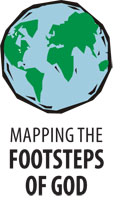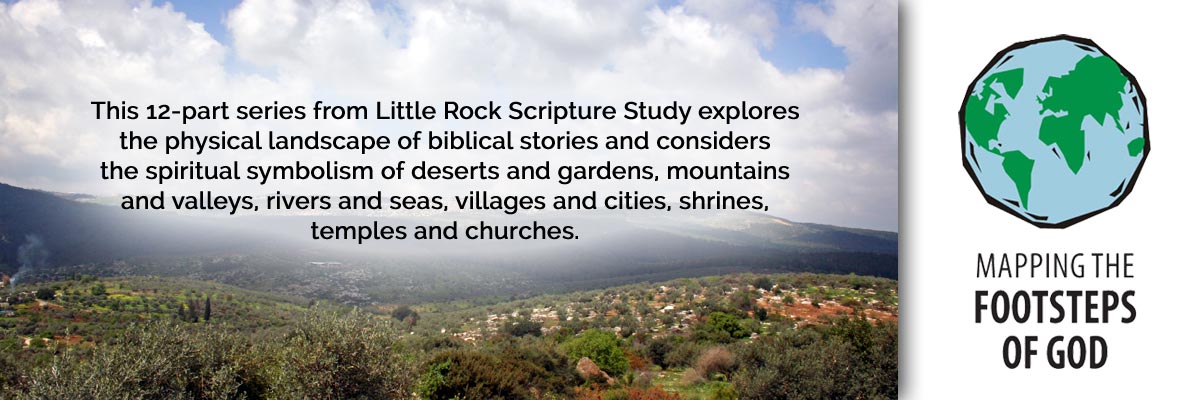Official Website of the
Catholic Diocese of Little Rock
Only God can calm the chaos of the sea
Published: July 26, 2014
This is the seventh column in a 12-part series
By Cackie Upchurch
Director of Little Rock Scripture Study
"In the beginning, when God created the heavens and the earth — and the earth was without form or shape, with darkness over the abyss and a mighty wind sweeping over the waters … " The opening words of Genesis introduce us to the God who steps into this abyss and separates the waters from the dry land, the God who gives order and meaning to creation.
 For ancient peoples of the Middle East, the seas were often places to be feared, chaotic in power and size, unable to be restrained. The creatures that lived in these waters sometimes took on mythical dimensions, representing continuing chaos and danger that only a powerful deity could control.
For ancient peoples of the Middle East, the seas were often places to be feared, chaotic in power and size, unable to be restrained. The creatures that lived in these waters sometimes took on mythical dimensions, representing continuing chaos and danger that only a powerful deity could control.
The book of Job describes two such water creatures, Behemoth and Leviathan, in gripping detail. "His bones are like tubes of bronze; his limbs are like iron rods" (Job 40:18). "When he rises up, the gods are afraid; when he crashes down, they fall back" (Job 41:17). Job, in the end, professes his faith in God's power, much as the psalmist does when he proclaims, "You crushed the heads of Leviathan, gave him as food to the sharks" (Psalm 74:14).
Such language is but one way to articulate God's power on behalf of Israel and later in the lives of those who placed their trust in God's son, Jesus. This struggle between chaos and order, between fear and trust, can be seen in some key biblical stories involving large bodies of water.
Consider the critical scene where the Hebrews cross from the chaos of slavery in Egypt to the freedom God offers in Canaan (Exodus 14:1-31). Scholars continue to debate the route of the Hebrews as they made their way across the Sinai desert and speculate about whether the sea they crossed on foot was indeed the Red Sea or was a more northerly shallow area known as the Sea of Reeds.
The point for Israel was not to offer a geography lesson but to profess a conviction: Without a mighty act of God they would never have escaped and the Egyptian armies that pursued them would not have been destroyed. Chaos swallowed up their enemies, while safe passage gave way to joy for God's people. It is little wonder that this scene is a central story proclaimed in the Easter Vigil in our parishes as we give witness to God's triumph over the chaos of sin and death.
Another sea that plays a role in Scripture is the Mediterranean, also known as the Great Sea (as in Numbers 34:6), which provides the western border for the small sliver of land we know as Israel. In ancient times the Philistines occupied the land between this sea and the Jordan River. The Philistines, long-time enemies of Israel, were known for their use of iron, making their weapons superior to the bronze weapons of Israel. Defeating these people from the sea was understood as an act of God's power (as in 1 Sam 17:1-54).
Within Israel itself, the Sea of Galilee is one of the most beloved and beautiful areas of the nation. In Old Testament times it was usually referred to as Lake Chinnereth (Numbers 34:11; Joshua 13:27), the name deriving for the Hebrew word for harp, a reference to its shape. Located at the northern end of the Jordan River, it is a fertile region dotted with small communities such as Bethsaida, Capernaum, and Tiberius.
The Galilee region was known for fishing enterprises and is the place where some of Jesus' first followers left behind their nets. Many of Jesus' healings were noted here (as described in Matthew 4:23-25 and Mark 3:7-12), as well as the feeding of the multitude which is noted six times in the Gospels. A hillside along the southern shore commemorates the location of the Sermon on the Mount in Matthew 5–7.
Pilgrims today often take a boat out on the Sea of Galilee to meditate on the scene in three Gospels where Jesus calms the storm (Mark 4:35-41; Matthew 8:23-37; Luke 8:22-25). Once again, the literal chaos is calmed, pointing us to Jesus' authority to speak over the abyss and restore order.
Over the course of salvation history, God's people experienced time and again the powerful forces of chaos in their lives. The Bible stands as a testament to God's continuing power to tame these forces and to transform chaos into grace-filled order.
Study Questions
- Given our own experiences with the power of nature's forces, can you understand why the ancient people would often look for signs of God's power in how nature responded?
- After Pharaoh's armies are swallowed by the sea, God's people rejoice. What emotions do you find in the longer hymn of Moses in Exodus 15:1-8 and the brief refrain of Miriam in 15:19-21? What does this scene teach you about their early experience of God?
- Spend some time reviewing the Sermon on the Mount (Matthew 5–7) and imagine yourself among the crowd gathered listening to Jesus and looking out at the Sea of Galilee behind him. How do his words capture the divine authority that also ordered creation at the start?
- Read the three versions of Jesus calming the sea (Mark 4:35-41; Matthew 8:23-37; Luke 8:22-25). Are there details in any of these accounts that capture your imagination? How has Jesus demonstrated his power over the rough waters you find in your life?
This article was originally published in Arkansas Catholic July 26, 2014. Copyright Diocese of Little Rock. All rights reserved. This article may be copied or redistributed with acknowledgement and permission of the publisher.




